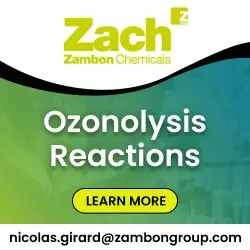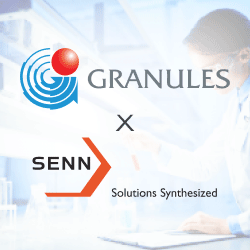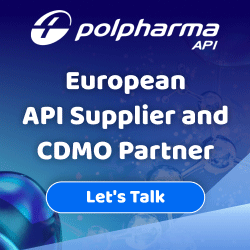Overview of API manufacturing ozonolysis, including the large scale ozonolysis of alkenes & alkynes via oxidation and reduction organic reactions.
Q1. What is ozonolysis?
Ozonolysis services can be outsourced from various CDMOs and CMOs that identify as ozonolysis service providers. Ozonolysis is a widely used reaction in organic synthesis and alkenes and alkynes are the most commonly used substrates for ozonolysis reactions. Ozonolysis is the cleavage of an alkene or alkyne with ozone to form organic compounds in which the multiple carbon–carbon bonds (double or triple bonds) have been replaced by a carbon–oxygen bond. The outcome of the reaction depends on the type of multiple bond being oxidized and the workup conditions. Ozonolysis is a process capable of producing aldehydes, dialdehydes, carboxylic acids, dicarboxylic acids, alcohols and dialcohols. The reaction yields products depending on the carbon-chains and reagents (oxidising agents & reducing agents) used. Ozonolysis is thus a very powerful tool in organic chemistry as it gives access to a broad range of key functional groups via organic synthesis (multi-step synthesis). Ozonolysis has also been used extensively in the determination of the structure of natural products, particularly terpenes. Ozonolysis was an important diagnostic tool for the determination of the position of unsaturation in unknown molecules before the invention and development of spectroscopic techniques for identification and characterization of organic compounds. Ozonolysis further proved to be attractive and promising due to its advantages over traditional methods, including low inhibitor compounds production, minimal effect on carbohydrates, liquid phase absence, no chemical requirements, mild conditions, in-site and direct ozone production, and the generation of easily degradable subproducts. Ozonolysis has a number of of other advantages over conventional oxidation methods, including but not limited to: - Quicker reactions with improved yields - Cleaner reactions and fewer side products - No requirement for additional water - Easier purification through gaseous oxidizing agents - Lower production costs (especially for large-scale ozonolysis) However, there are certain safety issues associated with ozonolysis, and ozone is highly toxic and has many negative effects. Therefore, prior to performing an ozonolysis reaction, experimenters must consider the reactivity and toxicity of ozone, the exothermicity of the reaction, and the potential of the intermediates and products to undergo self-accelerating and dangerously exothermic decomposition reactions. Therefore, ozonolysis service providers must perform extensive process safety studies prior to carrying out any organic synthesis pharmaceutical process. The approach to large scale ozonolysis in a safe and efficient manner involves several steps to go from physicochemical studies to commercialization. Some of the most vital steps include laboratory feasibility studies, process safety studies, redox reactions, scale up - with hazard evaluations and safety assessments, etc. These pharmaceutical processes are essential to successful large scale ozonolysis, taking production from laboratory to ton scale. The steps involved in large scale ozonolysis are explored in detail below. Step 1: Selecting and weighing raw materials Selecting alkenes or alkynes and oxidizing agents, reducing agents, etc. and weighing them in order to produce the desired quantities of the selected carbonyl groups. Commonly used reagents used in ozonolysis reactions include oxidising agents (Ozone - O3) and reducing agents (e.g. dimethyl sulfide, zinc & acetic acid, etc.). Step 2: Process development and process safety studies The highly explosive nature of some of the reagents used in ozonolysis reactions demand extensive know-how, high safety standards, and strict process controls prior to implementing production. Process development is the strategy via which a pharmaceutical process for manufacturing is identified for a drug substance from an early stage through scale-up and tech transfer to commercialization. Process parameters such as reactor design, moisture, particle size, pH, ozone concentration, ozone/air flow and reaction time have a remarkable influence on process efficiency through factors such as ozone consumption, composition of the pretreated biomass, yields of sugar release and the formation of inhibitory compounds. Additional research is necessary to optimize the development of the ozonolysis process and achieve economic feasibility for the pharmaceutical process by applying the biorefinery concept. Step 3: Redox reactions Ozone is a very reactive allotrope of oxygen. The reaction of ozone (oxidising agents) with alkenes and alkynes causes the oxidative cleaving of the carbon compounds. Ozonolysis of alkenes and alkynes are achieved via two-step oxidation and reduction reactions also known as redox reactions. These oxidation methods are explored in detail in the subsequent question. Step 4: Scale up Scale up is generally defined as the process of increasing batch sizes. In process scale up, a formula is transformed into a viable, robust product by the development of a reliable and practical method of manufacturing that affects the orderly transition from laboratory to routine processing in a full-scale production CDMO facility. Scale up is further supported by technology transfer services. After scale up only, production from laboratory to ton scale is achieved. Commercialization The development of organic compounds formed from the ozonolysis contract manufacturing services outlined above, are usually followed by packaging selection, late stage analytical development services, and finally commercialization. Product commercialization processes involve complex multi-departmental (and often multi-organizational) collaboration to establish market access, patient and provider awareness, sales force readiness, customer support programs, supply chain preparedness, and more. Ozonolysis is the cleavage of an alkene or alkyne with ozone (O3). The process allows for carbon-carbon double or triple bonds to be replaced by double bonds with oxygen. This reaction is often used to identify the structure of unknown alkenes and alkynes by breaking them down into smaller, more easily identifiable pieces. The ozonolysis of alkenes: In the process of ozonolysis of alkenes, The oxidative cleavage of alkenes is achieved with the help of ozone and potassium permanganate, however, ozonolysis with ozone is the best method to cleave alkenes. In organic synthesis, ozonolysis can also open up cycloalkenes. Step 1: The electrophilic addition of ozone to the carbon-carbon bond forms the molozonide intermediate which is quite unstable. Due to this unstable nature, the molozonide continues reacting – breaking apart to form a carbonyl molecule and a carbonyl oxide molecule. Step 2: The carbonyl and the carbonyl oxide rearrange themselves and reform to create the stable ozonide intermediate. A reductive or oxidative workup could then be performed to convert the ozonide molecule into the desired carbonyl products. Ozonolysis allows the cleavage of alkene double bonds by reaction with ozone. Depending on the work up in ozonolysis of alkenes, different products may be isolated: reductive work-up gives either alcohols or carbonyls, while oxidative work-up leads to carboxylic acids or ketones. The reaction of alkenes with ozone is widely used to determine positions of carbon-carbon double bonds. It is milder than other oxidation methods (epoxidation & hydroxylation) and both ketones and aldehydes can be recovered without further development of the ozonolysis process. The ozonolysis of alkynes: Alkynes are less reactive towards ozonolysis than alkenes. The ozonolysis of alkynes proceeds in the same two steps outlined above for the ozonolysis of alkenes. The alkyne reacts with the ozone, causing the breakage of the alkyne. This gives rise to the ozonide intermediate. A simple aqueous workup follows with the help of zinc metal, finally yielding a dicarbonyl compound. However depending on the type of alkyne used (internal or external) they can yield different products (two carboxylic acids and carboxylic acid & CO2 respectively). Ozonolysis of alkynes generally gives an acid anhydride or diketone product, not complete fragmentation as for alkenes. The exact mechanism is not completely known, but if the reaction is performed in the presence of water, the anhydride hydrolyzes to give two carboxylic acids. As new chemical entities (NCEs) with greater molecular complexity enter drug development pipelines, the demand for hazardous chemistry techniques is growing. Hazardous chemistry can provide access to synthetic routes of production for active pharmaceutical ingredients (APIs), raw materials, intermediates, etc. which overall involve fewer processing stages. These alternative routes of multi-step synthesis organic reactions are not always considered during the earlier phases of development due to the risks involved. But, ultimately, these routes allow API manufacturers, with the right experience, to develop more direct and cost-effective processes that will produce higher yields. The use of hazardous chemistry generally helps to considerably reduce the number of steps in multi-step synthesis in organic reactions as well as the amount of impurities and by-product generated, leading to cost-effective syntheses affording the targeted compounds in high yields. The highly explosive nature of some reagents demands extensive know-how, high safety standards, and strict process controls. Some hazardous chemistry reactions: - Ozonolysis - Azide Chemistry - Carbon Disulfide Chemistry - Nitration - Oxidation (with H2O2, O2, etc.) - Cyclopropanation - Hydrazine chemistry Hazardous chemistry services: - Hazard Evaluation - Process Design - Ozonolysis Services - Hazardous Raw Material Synthesis - Intermediate Production via Hazardous Chemistries Hazardous chemistry services key benefits: - Cleaner chemistry with fewer or no side reactions - Fewer processing stages - Reduced cost through consuming less material and minimising waste - Simpler purification and reduced processing time - Reduced need for capital equipment There are various pharmaceutical companies that identify as ozonolysis service providers and offer custom synthesis and contract manufacturing services for APIs along with the preparation of chemical intermediates, and other organic compounds. Some of the leading custom synthesis & contract manufacturing organizations with ozonolysis capabilities are: Zach System Zach System is a fine chemicals company which is an ozonolysis service provider dedicated not only to providing its customers with fast, cost-effective quality custom synthesis services but also the preparation of chemical intermediates and APIs and supporting customers with extensive process development expertise. Zach system offers various custom synthesis and contract manufacturing services including asymmetric synthesis, cyanation, lithiation, etc. with ozonolysis capabilities (ozonolysis services). Furthermore their core competencies and technologies include ultrafiltration and nanofiltration. Their R&D department also offers continuous flow and microtechnologies limited to ozonolysis. UQUIFA With 80 years of experience, UQUIFA’S business model is based on a combination of a quality manufacturing platform and track record of service and reliability. UQUIFA is an ozonolysis service provider which manufactures Active Pharmaceutical Ingredients (APIs) and offers preparation of chemical intermediates for the pharmaceutical and animal health industries, globally.Q2. What are the different steps involved in large scale ozonolysis?
Q3. How does ozonolysis occur for alkenes and alkynes?
Q4. What are hazardous chemistry services?
Q5. Which are some of the leading custom synthesis & contract manufacturing organizations offering ozonolysis?
All Suppliers












 Zach System is committed to providing Highly Customized Solutions for all your Development Programs.
Zach System is committed to providing Highly Customized Solutions for all your Development Programs.




